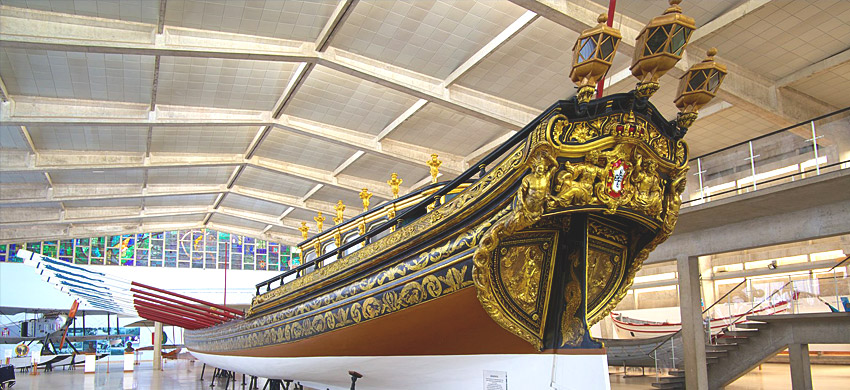

The best way to experience the glorious past of Portugal is to visit one of Lisbon’s most original museums: the Maritime Museum (Museu de Marinha in Portuguese language). The halls rewrite the history of the great adventures of the Portuguese sailors and explorers who expanded the borders of the world through their discoveries.
A surprising collection of more than 1700 pieces, including more than 400 naval models and 30 ships (some perfectly preserved), along with relics, maps, tools, and documents wait for you at this museum located at one wing of the beautiful Jeronimos Monastery.
A must visit place for cartography and maritime lovers; this museum is a testimony of the old maritime Portuguese power and it is capable of enchanting visitors, adults, and kids.
The visit to the Maritime Museum is a charming journey through the past that will stimulate your curiosity and fantasy. Among the several things that one can see there are:
The numerous maps of the collection will show you the routes undertook by the seamen who left their home to discover unexplored territories. There is also a planisphere from the 17th century.
The museum includes also a Middle East exhibition where it is possible to admire precious porcelains and replicas of the traditional Asian ships, as well as a selection dedicated to the first seaplanes, like the Santa Cruz seaplane, which was the first seaplane to fly over the ocean in 1922.
If you are passionate about Portugal’s maritime history, don’t miss a visit to the Maritime Museum, perhaps before or after visiting the Belem Tower or the Monastery dos Jeronimos. If you have purchased the Lisboa Card you will get a discount on the entrance fee at the ticket office.
If in addition to the visit of the Museu da Marinha you want to combine the visit of the famous frigate D. Fernando II and Glória, you can do it with a single ticket.
The Maritime Museum, or Marine Museum, is located in the Belém district and it can be easily reached by bus, tram, or train.
City Card allow you to save on public transport and / or on the entrances to the main tourist attractions.
